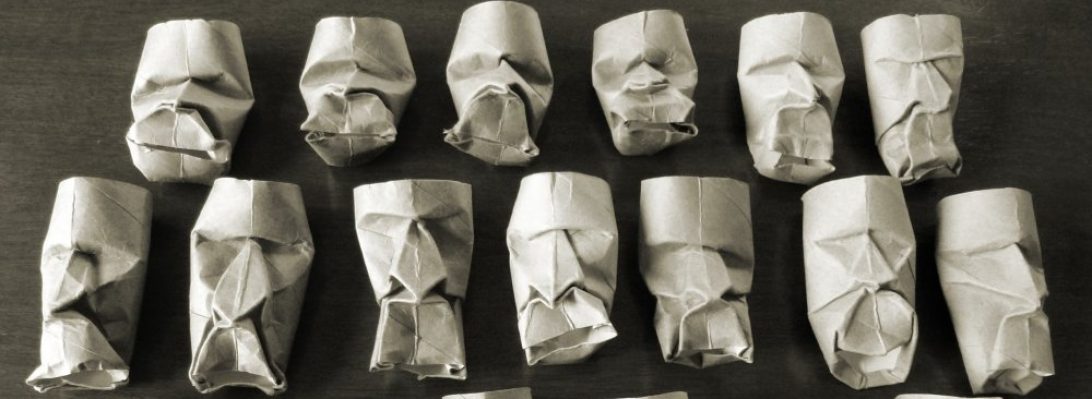I came across a bunch of variations to a 12 unit modular cube that variously used a 1×1, 2×1 and 3×1 rectangle. I settled on the square variant (in retrospect I should have used the 2×1 version – half as much paper required, but you live and learn.
Initially I just was interested in the locking mechanism of a cube, so folded a red one. then I decided to see how a yellow one might intersect, then because I had some purple paper left over from the torus I thought to link the yellow to a purple, and the idea sort of grew from there.
I scoured my dealer’s (Rhonda, the custodian of paper supplies) shelves and ended up finding 11 different colours/tints – I added a “black” origami paper as the 12th colour and, hey presto they formed a ring of particular beauty.
It just sort of happened – I resolved to only fold during breaks at work, in front of kids, and over a period of 2 weeks it grew into a long chain and I was finally ready to join it into a ring.
I want to say this join was an easy, simple thing. I did not find it so – I tried, undid it, tried again, unfolded it (muttering obscenities under my breath). tried again, thought I had it until I realised it was wrong (the pattern should repeat, the join should not be visible – doh! Continue reading →


















